Mysterious ‘Las Labradas’ Petroglyphs With Roots In The Pre-Columbian Times Of Mexico
A. Sutherland - AncientPages.com - Sinaloa's rocks covered with a variety of figures are true history rocks, a legacy of mythological traditions with roots in the Pre-columbian times of North America.
Little is known of the Sinaloa people and their early history. However, ancient carvings and legends represent a legacy of these people. Las Labradas petroglyphs' area is a very ancient and sacred site to the coastal Indians of the area.

A large number of beautiful petroglyphs known as 'las labradas' have been found on a beach in the vicinity of Barras de Piaxtla, a small fishing village, north of Mazatlan in the Mexican state of Sinaloa.
Many of the carvings suffered significant damage due to weather and water over the centuries.
Remarkably, natural erosion hasn't been destructive enough to erase all the testimonies left by the ancients for future generations.
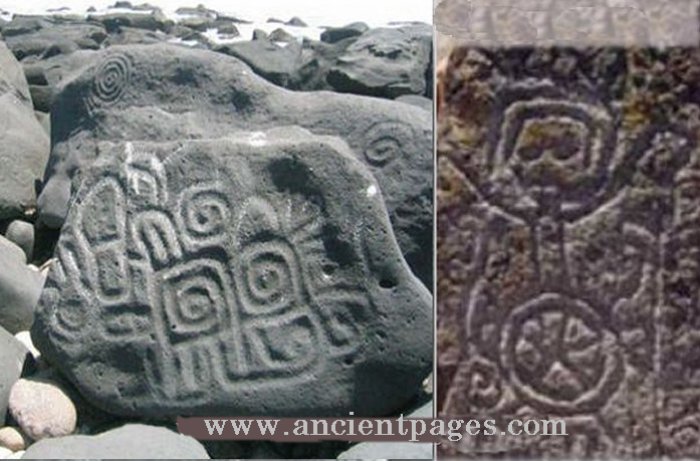
It's still quite easy to recognize many anthropomorphic, zoomorphic or geometric forms that represent solar phenomena expressed with lines, dots, ancient spirals, and figures.
In 1949 engineer Gonzalo Ortiz de Zárate arrived in Culiacán. Of Spanish origin, he came to land in Sinaloa to work in Eureka, a construction company that would be in charge, at that time, to build the irrigation canals of the Sanalona dam.
Accidentally, on one of the beaches of the Sinaloan Pacific, he stumbled upon one of his best finds: "more than 300 meters of rocks of volcanic origin piled at the foot of the beach with a huge number of engravings: evocations of the sun through concentric circles, flowers, animals, human figures... total, almost 650 different prints. The beach, already known then as “las labradas”, was in the set of small inlets near the mouth of the Piaxtla river, known as “Barras de Piaxtla,” as wrote Professor Juan González Morfín, Universidad Panamerican, Mexico.
Many cultures left similar carvings around the world and Sinaloa's prehistoric region is one of them. The ancient carvings were left by the groups that belonged to Aztatlán culture, Sinaloa, México, and living along the rivers of Sinaloa.

Perhaps these people also recorded their prehistoric testimonies on other rocks discovered in several places in Sinaloa.
The Aztatlán culture was one of the major cultures that developed during the late pre-Hispanic northwest Mesoamerica (900 to 1350 AD). Only a few archaeological excavations were carried out over the last fifty years in this region. However, there is some evidence that the Aztatlán culture had a significant influence on social changes in northern Mexico and the American Southwest.
In 1942, Manuel Bonilla (1867 - 1957), a scholar and one of few, who described intriguing petroglyphs of Sinaloa, in his book "De Atlatlán a México" (From Atlatlán to Mexico) said that these relics constitute a very important key to the history of prehistoric peoples of Mexico.
Written by – A. Sutherland - AncientPages.com Senior Staff Writer
Copyright © AncientPages.com All rights reserved. This material may not be published, broadcast, rewritten or redistributed in whole or part without the express written permission of AncientPages.com
Expand for referencesMore From Ancient Pages
-
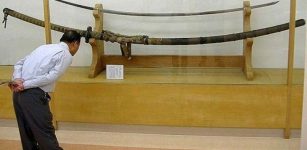 The Norimitsu Odachi – Giant Japanese Sword Remains An Enigma
Artifacts | Mar 22, 2019
The Norimitsu Odachi – Giant Japanese Sword Remains An Enigma
Artifacts | Mar 22, 2019 -
 Mahabharata Is Much Older Than Previously Thought – Archaeological Discovery Reveals
Archaeology | Oct 22, 2019
Mahabharata Is Much Older Than Previously Thought – Archaeological Discovery Reveals
Archaeology | Oct 22, 2019 -
 Edfu Texts Reveal Secrets Of Predynastic Egypt And Zep Tepi
Egyptian Mythology | May 27, 2021
Edfu Texts Reveal Secrets Of Predynastic Egypt And Zep Tepi
Egyptian Mythology | May 27, 2021 -
 Mysterious Utah: Prehistoric Ancient Petroglyphs Of Santa Clara River Reserve
Civilizations | Oct 2, 2018
Mysterious Utah: Prehistoric Ancient Petroglyphs Of Santa Clara River Reserve
Civilizations | Oct 2, 2018 -
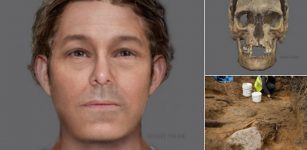 Is This The Face Of A 16th Century Pirate Or Criminal?
Archaeology | Jan 5, 2016
Is This The Face Of A 16th Century Pirate Or Criminal?
Archaeology | Jan 5, 2016 -
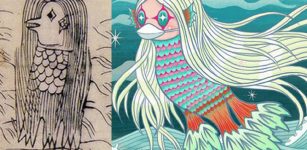 Yokai Amabie – Protective Ancient Spirit That Can Ward Off Epidemics
Featured Stories | Mar 30, 2020
Yokai Amabie – Protective Ancient Spirit That Can Ward Off Epidemics
Featured Stories | Mar 30, 2020 -
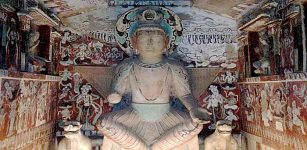 Mogao Grottoes, Dunhuang, China – Fascinating Statues, Manuscripts And Wall Paintings
Featured Stories | Dec 15, 2015
Mogao Grottoes, Dunhuang, China – Fascinating Statues, Manuscripts And Wall Paintings
Featured Stories | Dec 15, 2015 -
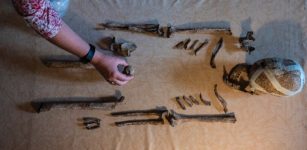 Who Was The The Mysterious Lady Of Bietikow And What Had She In Common With Ötzi Iceman?
Archaeology | Nov 6, 2020
Who Was The The Mysterious Lady Of Bietikow And What Had She In Common With Ötzi Iceman?
Archaeology | Nov 6, 2020 -
 Who Was Pseudo-Nero?
Ancient History Facts | Apr 25, 2016
Who Was Pseudo-Nero?
Ancient History Facts | Apr 25, 2016 -
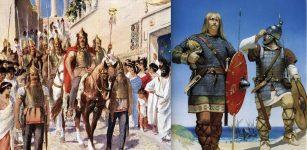 Who Were The Goths And Where Did They Come From?
Civilizations | Apr 16, 2019
Who Were The Goths And Where Did They Come From?
Civilizations | Apr 16, 2019 -
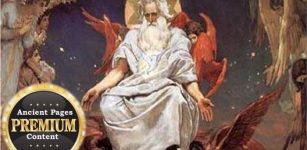 Enoch – The Initiator – Pre-Flood Messenger Of God
Ancient Mysteries | Oct 5, 2015
Enoch – The Initiator – Pre-Flood Messenger Of God
Ancient Mysteries | Oct 5, 2015 -
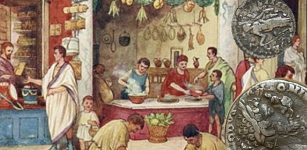 Thousands Of Roman Coins Found Across Europe Are Fake – Archaeologists Say
Archaeology | Jul 9, 2019
Thousands Of Roman Coins Found Across Europe Are Fake – Archaeologists Say
Archaeology | Jul 9, 2019 -
 Ancient Mosaic Floor Decorated With Colorful Floral Designs Re-Uncovered After 40 Years
Archaeology | Mar 25, 2023
Ancient Mosaic Floor Decorated With Colorful Floral Designs Re-Uncovered After 40 Years
Archaeology | Mar 25, 2023 -
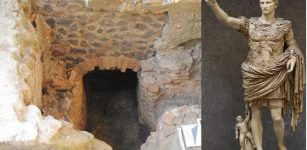 Lost Villa Of First Roman Emperor Augustus Found At Somma Vesuviana In Southern Italy
Archaeology | Apr 19, 2024
Lost Villa Of First Roman Emperor Augustus Found At Somma Vesuviana In Southern Italy
Archaeology | Apr 19, 2024 -
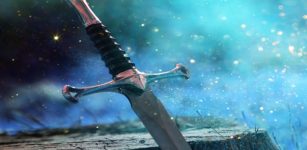 Skofnung – Formidable Sword With Supernatural Powers That Belonged To Legendary Danish King Hrólf Kraki
Featured Stories | Mar 3, 2018
Skofnung – Formidable Sword With Supernatural Powers That Belonged To Legendary Danish King Hrólf Kraki
Featured Stories | Mar 3, 2018 -
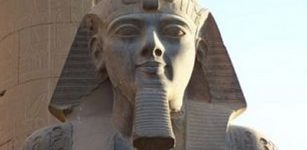 On This Day In History: Ramesses II Became Pharaoh Of Ancient Egypt – On May 31, 1279 BC
News | May 31, 2016
On This Day In History: Ramesses II Became Pharaoh Of Ancient Egypt – On May 31, 1279 BC
News | May 31, 2016 -
 Superhighways Traveled By The First Australians Reveal A 10,000-Year Journey Through The Continent – New Study
Archaeology | Feb 3, 2023
Superhighways Traveled By The First Australians Reveal A 10,000-Year Journey Through The Continent – New Study
Archaeology | Feb 3, 2023 -
 Fearsome Aztec Eagle And Jaguar Warriors Of Mesoamerica
Featured Stories | Sep 14, 2023
Fearsome Aztec Eagle And Jaguar Warriors Of Mesoamerica
Featured Stories | Sep 14, 2023 -
 First Dream Of The New Year – Japanese Hatsuyume Tradition
Ancient Traditions And Customs | Jan 1, 2025
First Dream Of The New Year – Japanese Hatsuyume Tradition
Ancient Traditions And Customs | Jan 1, 2025 -
 7,000-Year-Old Kilns From Ceramics Workshop Unearthed In Northeast Bulgaria
Archaeology | Nov 20, 2020
7,000-Year-Old Kilns From Ceramics Workshop Unearthed In Northeast Bulgaria
Archaeology | Nov 20, 2020
